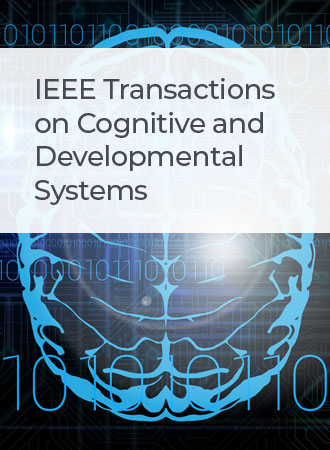利用图卷积-间隔-2 型模糊网络的脑连接性分析对科学创新技能进行认知评估
IF 4.9
3区 计算机科学
Q1 COMPUTER SCIENCE, ARTIFICIAL INTELLIGENCE
IEEE Transactions on Cognitive and Developmental Systems
Pub Date : 2024-04-16
DOI:10.1109/TCDS.2024.3390005
引用次数: 0
摘要
科学创造力是指科学创新的自然/自动化起源,推动科学、技术、工业和/或社会进步。心理折纸(MPF)需要空间推理,而空间推理是判断人的创造潜力的重要属性。文章提出了一种新方法,利用功能性近红外光谱(fNIRS)从人们参与 MPF 任务期间的大脑连接网络(BCN)来判断他们的创造潜力。这项工作包括三个阶段。第一阶段包括使用皮尔逊相关法构建 BCN。第二阶段评估网络中节点的中心性特征,并在第三阶段将其转移到拟议的图卷积-区间-2 型模糊网络(GC-IT2FN)中,从而将个人的创造潜力分为四个等级。这项工作的新颖之处包括1) 在网络中采用新颖的自我关注机制,引导图卷积层关注最相关的节点;2) 在图卷积后选择新的激活函数 Logish,以提高分类器的准确性;3) 利用基于 IT2FN 的分类器所使用的模糊集的不确定性足迹(FOU)中有希望的区域,减少大脑数据的不确定性对分类器性能的影响。实验证明,与传统方法相比,所提出的框架非常有效。本文章由计算机程序翻译,如有差异,请以英文原文为准。
Cognitive Assessment of Scientific Creative Skill by Brain-Connectivity Analysis Using Graph Convolutional Interval Type-2 Fuzzy Network
Scientific creativity refers to natural/automated genesis of innovations in science, propelling scientific, technological, industrial, and/or societal progress. Mental paper folding (MPF) requires spatial reasoning, which is an important attribute to determine creative potential of people. The article proposes a novel approach to determine creative potential of people from their brain-connectivity network (BCN) during their participation in MPF tasks using functional near-infrared spectroscopy (fNIRS). The work involves three phases. The first phase includes construction of BCN using Pearson's correlation method. The centrality features of the nodes in the network are assessed in the second phase and transferred to a proposed graph convolutional-interval type-2 fuzzy network (GC-IT2FN) in the third phase to classify the creative potential of individuals in four grades. The novelty of the work includes: 1) a novel self-attention mechanism in the network to guide graph convolution layers to focus on the most relevant nodes; 2) selection of a new activation function, Logish, after graph convolution to enhance classifier accuracy; and 3) utilizing the promising region in the footprint of uncertainty (FOU) of the used fuzzy sets of IT2FN-based classifier to reduce the effect of uncertainty in brain data on classifier performance. Experiments conducted demonstrate the efficacy of the proposed framework in contrast to traditional approaches.
求助全文
通过发布文献求助,成功后即可免费获取论文全文。
去求助
来源期刊

IEEE Transactions on Cognitive and Developmental Systems
Computer Science-Software
CiteScore
7.20
自引率
10.00%
发文量
170
期刊介绍:
The IEEE Transactions on Cognitive and Developmental Systems (TCDS) focuses on advances in the study of development and cognition in natural (humans, animals) and artificial (robots, agents) systems. It welcomes contributions from multiple related disciplines including cognitive systems, cognitive robotics, developmental and epigenetic robotics, autonomous and evolutionary robotics, social structures, multi-agent and artificial life systems, computational neuroscience, and developmental psychology. Articles on theoretical, computational, application-oriented, and experimental studies as well as reviews in these areas are considered.
 求助内容:
求助内容: 应助结果提醒方式:
应助结果提醒方式:


